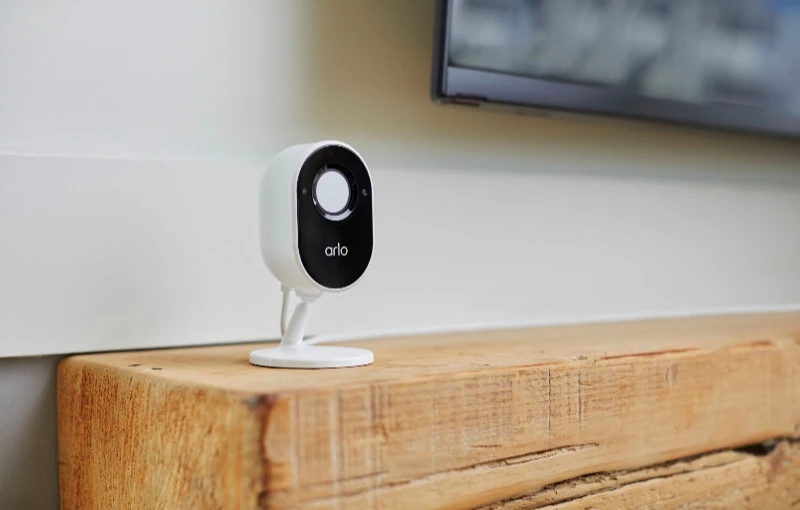Millions of people across the globe have embraced the convenience of indoor smart cameras in their homes. These devices offer the ability to monitor our surroundings remotely, providing peace of mind and security. However, as we enjoy the benefits of these gadgets, it's crucial to consider a pressing question: Are you being watched, and just how secure are these devices against potential hacks?
The Vulnerabilities of Indoor Smart Cameras
While many prominent companies that manufacture indoor cameras promote security as a top feature, the reality is that Internet of Things (IoT) devices, like smart cameras, often have a subpar reputation when it comes to protecting against hackers. The primary reason behind this vulnerability lies in their design, which typically prioritizes their core functionality over security measures. In comparison to devices like personal computers or smartphones, the security of IoT devices often falls short.
So, if you're in the market for an indoor camera, you might be wondering how you can ensure that the model you choose isn't vulnerable to intrusion. Unfortunately, there's no such thing as absolute security online or in life, for that matter. However, there are strategies you can employ to mitigate the risk and safeguard your privacy.
Mitigating the Risk
One of the most straightforward solutions is to opt for a camera that doesn't rely on cloud connectivity. Many cameras offer the option to record footage directly to a memory card. While this ensures privacy, it means you won't have real-time access to your camera feed.
For those who want to view their camera feed in real time without relying on the cloud, self-hosting is an option. Self-hosting typically involves connecting a camera to your network and installing open-source software on a computer or server to control it. However, this approach often requires advanced configuration, making it less appealing for users seeking a plug-and-play solution. Additionally, even self-hosting isn't foolproof, as it can introduce security vulnerabilities, especially when dealing with devices that request the opening of ports or enabling Universal Plug and Play (UPnP) features.
Ports act as doors between your network and the internet, each with a unique number and purpose. In a secure home network, all ports should remain closed to prevent unauthorized access. Some services, however, require you to open ports for proper functionality. UPnP can automate this process, but it also opens the door for potential security breaches. Reputable smart camera manufacturers usually allow connections without requiring port openings. However, if you must open a port, it becomes easier for malicious actors to locate your camera and access its video feed. In fact, specialized search engines like Shodan exist to help individuals find IoT devices, including cameras, which have inadvertently exposed themselves by opening ports to the public.
However, it's important to note that not all solutions involving port openings are inherently dangerous. If you possess high-quality equipment with robust security features, including two-factor authentication, opening a port may not pose significant risks.
Cloud-Based Cameras and Their Challenges
If self-hosting seems too complex, or if you desire remote access to your cameras, you'll likely end up purchasing a camera from a reputable brand that offers a cloud-based app. These apps are convenient but come with their own set of challenges.
Choosing the right camera manufacturer plays a crucial role in minimizing security risks. Some companies have faced criticism due to security flaws in their products. For instance, Anker's Eufy security cameras encountered issues when attackers could easily tap into a live camera feed using the unit's serial number. This raised concerns about secondhand cameras potentially being used to spy on unsuspecting buyers. Moreover, a company's response to security issues is equally important. Anker's delayed acknowledgment of security problems and Wyze's failure to disclose vulnerabilities for years left users exposed.
To enhance your confidence in the camera you choose, select a company with a strong track record of addressing security breaches proactively.
Practical Precautions
In addition to avoiding port manipulation and opting for trusted vendors, taking common-sense precautions can further secure your indoor smart camera:
-
Use Strong Passwords: Ensure your camera has a strong password, and consider enabling two-factor authentication for added security.
-
Physical Privacy: Utilize a camera shutter when you're at home to physically block the camera lens. This ensures privacy when you're in the camera's field of view.
-
Secure Home Network: Protect your home Wi-Fi network with a robust password to prevent unauthorized access to your cameras.
-
Consider Camera Placement: Be mindful of where you place your smart camera in your home to avoid inadvertently capturing sensitive moments.
By following these precautions and understanding the potential vulnerabilities of indoor smart cameras, you can enjoy the benefits of enhanced security while minimizing the risks associated with these devices.


No comments yet